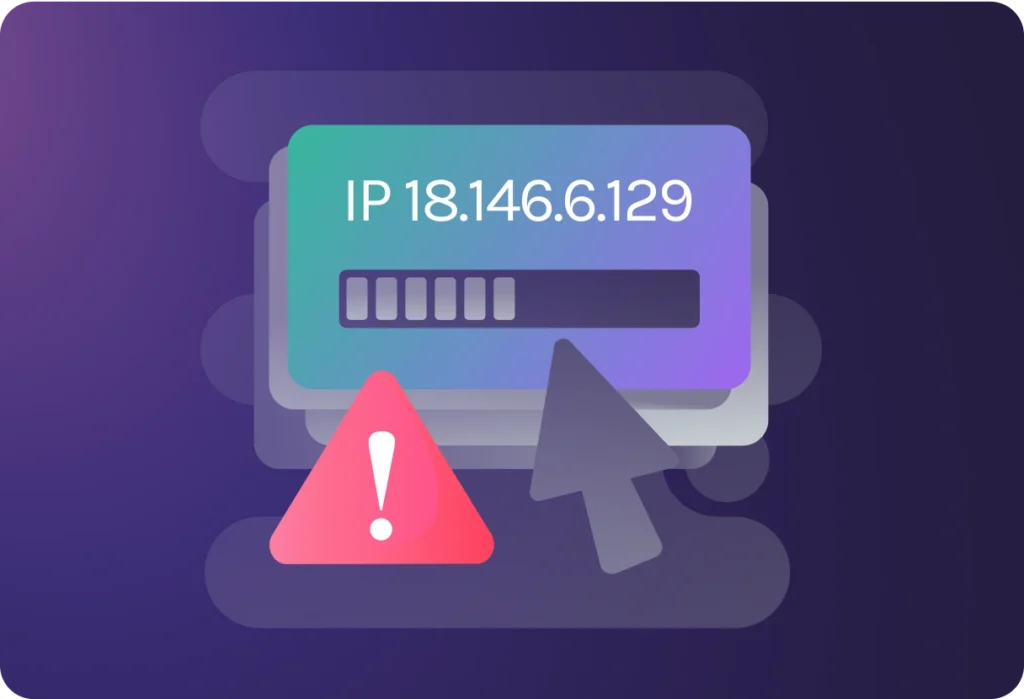- E-Commerce Security, Affiliate marketing
How Hackers Use IP Fraud to Breach Networks and Steal Data


In today’s interconnected world, cybersecurity remains one of the most critical challenges facing businesses and individuals alike. As digital transformation accelerates, hackers are continuously evolving their tactics to bypass security systems. One of the most insidious methods they use to breach networks and steal sensitive data is IP fraud. This sophisticated form of attack involves manipulating Internet Protocol (IP) addresses to evade detection and gain unauthorized access to systems.
In this blog post, we’ll explore how hackers use IP fraud, the dangers it poses, and how organizations can protect themselves against such attacks.
What is IP Fraud?
IP fraud involves the manipulation or spoofing of an IP address to either disguise the identity of the attacker or to gain illicit access to a network or system. The IP address is essentially the unique identifier assigned to devices connected to the internet, and it plays a crucial role in network security protocols.
In an IP fraud scenario, hackers may use a variety of techniques to manipulate or fake their IP address, making it appear as though the attack is coming from a legitimate or trusted source. This can allow them to bypass firewalls, access restricted areas, or launch malicious attacks while hiding their true identity.
Common IP Fraud Techniques Used by Hackers

1. IP Spoofing
IP spoofing is one of the most common methods used in IP fraud. In this technique, hackers forge the source IP address in the packet header to make it appear as though the packet is coming from a trusted source. The goal is to exploit the trust a network has in specific IP addresses, often allowing the attacker to gain access to sensitive data or systems.
For example, in a Distributed Denial of Service (DDoS) attack, an attacker may use IP spoofing to flood a server with requests, making it crash, while hiding the origin of the attack to avoid detection and prevention.
2. Man-in-the-Middle Attacks
In a Man-in-the-Middle (MitM) attack, hackers intercept communication between two parties by impersonating one or both of them. This is done by altering IP packets as they travel between systems. By pretending to be a legitimate user, the hacker can extract valuable data, such as login credentials, private information, or sensitive communications, without the victim realizing that their traffic has been compromised.
For example, an attacker may trick a victim into connecting to a fake Wi-Fi hotspot. Once the victim is connected, the hacker can observe and manipulate the victim’s traffic in real-time.
3. IP Address Pooling
Hackers may also manipulate large pools of IP addresses to gain access to networks. By using a large number of addresses, attackers can avoid triggering security alerts that are designed to detect multiple requests coming from a single suspicious IP address.
This method can be used to circumvent security measures like rate-limiting and bot protection systems. Additionally, by rotating through a pool of IP addresses, attackers can maintain prolonged access to networks or systems.
4. Geolocation Manipulation
Sometimes, hackers will disguise their location by spoofing the geographical location of their IP address. This is particularly useful for bypassing geo-restricted access controls or accessing content that is blocked in certain regions. By masking their location, hackers can evade restrictions and hide their true identity, making it more difficult for security systems to detect their activity.
For instance, a hacker in one part of the world may impersonate a user in a different region to bypass location-based restrictions and access private data or accounts.
The Risks of IP Fraud
The potential consequences of IP fraud are dire and can have serious repercussions for individuals and organizations. Here are a few risks associated with IP fraud:
1. Data Theft
Hackers can gain unauthorized access to private and confidential data, such as financial records, customer information, intellectual property, and login credentials. Once this data is compromised, it can be used for identity theft, fraud, or sold on the dark web.
2. System Compromise
Once hackers infiltrate a network using IP fraud, they may gain full control of a system. This can lead to further attacks, such as the installation of malware, ransomware, or other malicious software. These attacks can cripple systems, causing downtime, loss of business, and significant financial costs.
3. Reputational Damage
A successful IP fraud attack can severely damage an organization’s reputation. Customers and partners may lose trust in the company’s ability to protect sensitive information, resulting in lost business and legal consequences.
4. Legal and Regulatory Consequences
In some cases, data breaches due to IP fraud can lead to legal actions and penalties, particularly for businesses that are subject to regulatory frameworks like GDPR, HIPAA, or PCI-DSS. Organizations may be held liable for failing to protect customer data or for negligence in securing their networks.
How to Protect Against IP Fraud
While IP fraud can be challenging to prevent entirely, there are several strategies and best practices that businesses and individuals can implement to reduce the risk of such attacks:
1. Use Multi-Factor Authentication (MFA)
Implementing multi-factor authentication ensures that even if a hacker manages to spoof an IP address and steal login credentials, they will not be able to access sensitive data without the second layer of authentication.
2. Deploy Intrusion Detection and Prevention Systems (IDPS)
Intrusion detection systems (IDS) and intrusion prevention systems (IPS) can help detect unusual traffic patterns, including signs of IP spoofing or MitM attacks. These systems analyze traffic and raise alarms when suspicious activities are detected.
3. Monitor and Block Suspicious IP Addresses
Use IP reputation databases and monitoring tools to identify and block suspicious IP addresses in real-time. Keeping track of unusual access patterns or requests from unfamiliar geolocations can help spot potential fraud attempts early.
4. Encrypt Communication Channels
Encrypting communication channels, such as emails and network traffic, can ensure that even if hackers manage to intercept the data, they will not be able to read or modify it. This is particularly important for protecting sensitive information.
5. Regularly Update Security Software
Keeping security software up-to-date is crucial in protecting systems from emerging threats. Security patches and updates often contain fixes for vulnerabilities that hackers may exploit through IP fraud.
6. Implement Geo-blocking
To prevent geo-location-based attacks, organizations can use geo-blocking to limit access to systems from specific regions or countries. This can prevent hackers from bypassing location-based security measures.
Conclusion
IP fraud is a dangerous and evolving tactic used by cybercriminals to infiltrate networks, steal data, and cause chaos. By understanding how IP fraud works and implementing comprehensive cybersecurity measures, organizations can better defend themselves against these sophisticated attacks. Proactive vigilance, proper security protocols, and employee awareness are key to reducing the risk of becoming a victim of IP fraud.
Table of Contents
Join our community!
Subscribe to our newsletter for the latest updates, exclusive content, and more. Don’t miss out—sign up today!
Recent Posts

How IP Checks Work: A Guide to Verifying Internet Protocol Addresses
- 4 mins read

The Connection Between Malicious IPs and Botnet Attacks: How to Stay Safe
- 3 mins read

How Hackers Use IP Fraud to Breach Networks and Steal Data
- 5 mins read



